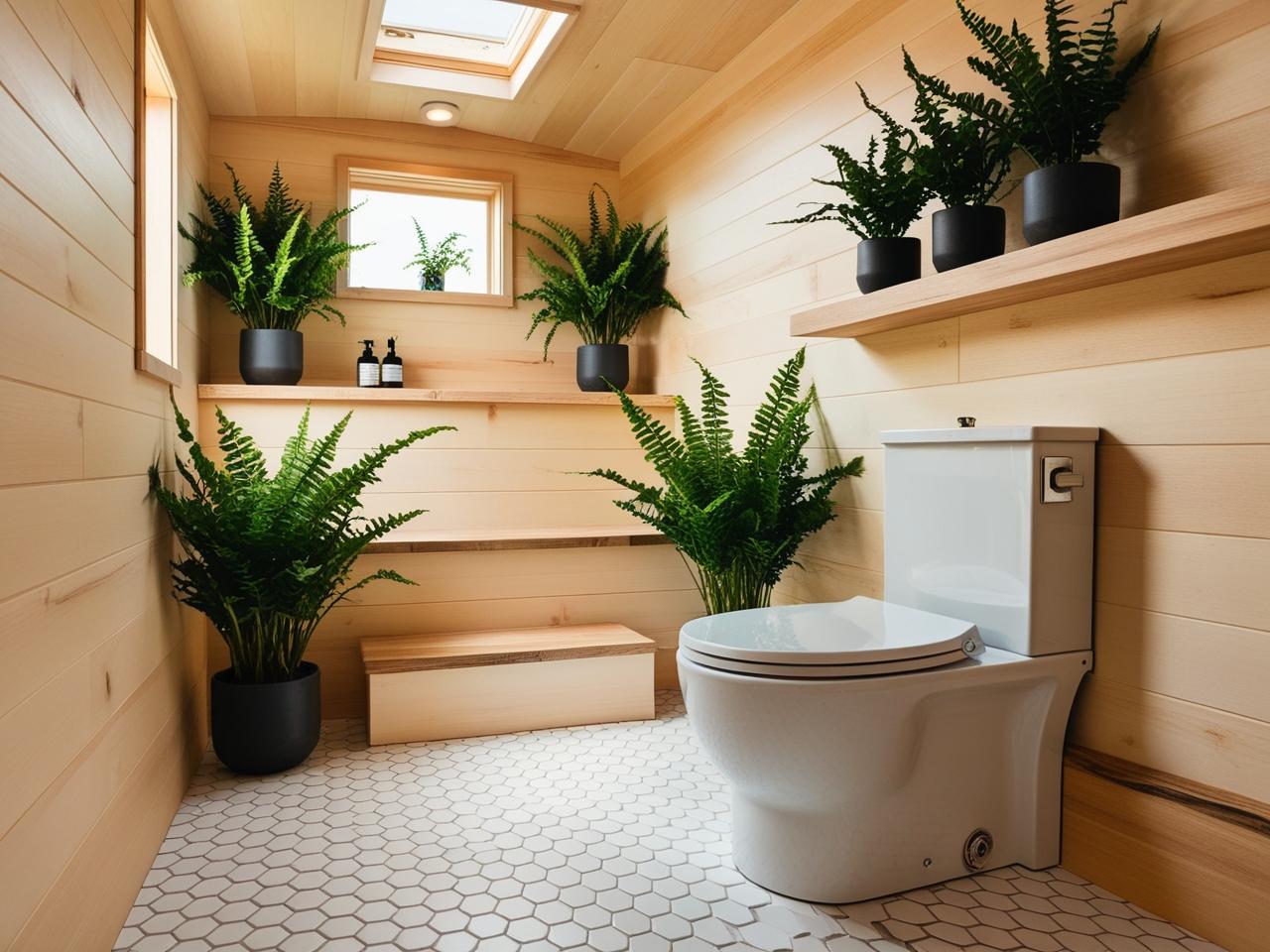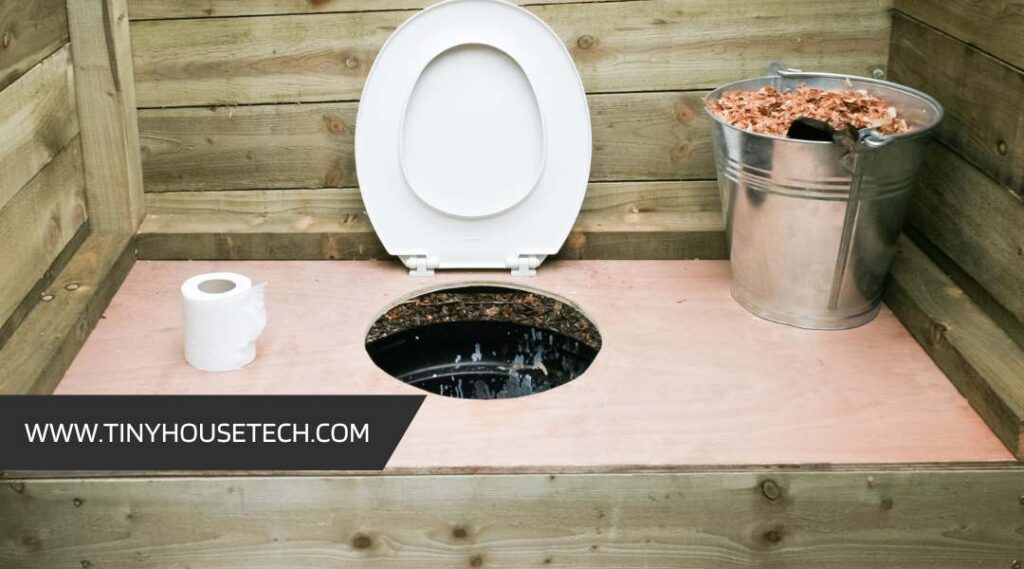Eco Friendly
Top Composting Toilets for Tiny Homes in 2025

Living Small, Living Smart: Why Composting Toilets Are Perfect for Tiny Homes
As more people shift toward minimalism, sustainability, and off-grid living, tiny houses have emerged as the perfect blend of functionality and freedom. One of the biggest challenges for any tiny homeowner? The bathroom.
Traditional flush toilets demand plumbing, septic tanks, or sewage hookups—luxuries that aren’t always compatible with a mobile or off-grid lifestyle. That’s where composting toilets come in: waterless, odor-free, eco-conscious, and compact.
If you’re planning your dream tiny house or upgrading your off-grid setup in 2025, this guide covers everything you need to know about composting toilets—from how they work to the best models available today.
What Is a Composting Toilet?
A composting toilet is a waterless toilet system that breaks down human waste through aerobic decomposition and evaporation, turning it into usable compost over time. Unlike traditional toilets, composting models use little to no water and often separate liquid and solid waste to aid in the composting process.
There are two main types:
- Self-contained composting toilets – All components are built into the toilet itself, ideal for small spaces like tiny homes, RVs, and boats.
- Central composting systems – Waste is transported to a remote composter (often beneath the house), suitable for larger off-grid homes.
In most tiny houses, self-contained systems are the go-to choice due to their simplicity, ease of installation, and space-saving design.

Top Composting Toilets for Tiny Homes in 2025
Let’s take a deep dive into the top-rated and most innovative composting toilets for this year.
BioLet Composting Toilets
BioLet is one of the most trusted names in composting technology. Their toilets are fully self-contained, electrically powered, and perfect for full-time use in tiny homes.
Why Choose BioLet:
- Automatic mixing and composting
- Low-maintenance and high capacity
- Quiet electric fan and heating system for odor-free operation
- Scandinavian design looks clean and modern
Ideal For:
Permanent tiny homes, cabins, and off-grid cottages that have access to electricity.
Price Range: High
ThinkTank Waterless Toilet
Buy from Composting Toilets Canada →
The ThinkTank toilet is a tough, rugged, and efficient solution for remote or power-limited tiny homes. It uses no electricity, making it a go-to for true off-grid setups.
Why Choose ThinkTank:
- No moving parts = less chance of failure
- Urine-diverting for cleaner and more efficient composting
- Designed specifically for use in freezing climates
- Easy to clean and empty
Ideal For:
Remote cabins, tiny homes without power, winter locations
Price Range: Moderate
Nature’s Head Composting Toilet (Honorable Mention)
Often referred to as the “vanlifer’s best friend”, Nature’s Head is one of the most popular names in the DIY and tiny house community.
Why Choose Nature’s Head:
- Rugged and compact
- Built-in agitator crank to speed up composting
- Separates liquids and solids for better hygiene
- Lightweight and easy to install
Ideal For:
Van conversions, travel trailers, or movable tiny homes.
Price Range: Moderate
What to Consider When Choosing a Composting Toilet
Every tiny house setup is unique, so it’s important to consider the following when picking the right toilet:
Power Access
If you’re off-grid or trying to conserve energy, a non-electric model like the ThinkTank may be your best bet. For modern amenities, BioLet’s electric models offer extra comfort and automation.
Climate
Cold weather? Make sure your composting toilet is built for it. The ThinkTank model is excellent for freezing conditions, while some electric models (like BioLet) come with heating systems.
Number of Users
Check the toilet’s capacity. Some models are made for 1-2 users, while others can accommodate families full-time.
Maintenance
Some systems require daily mixing or more frequent emptying. Others (like BioLet) are nearly hands-off with automated mixing and evaporation.
Budget
Expect to pay anywhere from $900 to $2,500 for a quality composting toilet in 2025. Investing in a trusted brand pays off in reliability, odor control, and ease of use.
Composting Toilets FAQ – Answering Your Top Questions
Q: Do composting toilets really not smell?
A: When properly installed and ventilated, composting toilets are surprisingly odor-free. Most smells are managed by fans, vent pipes, and composting media like coconut coir or peat moss.
Q: How often do I need to empty it?
A: It depends on the model and number of users. On average:
- Liquids: Every 2–4 days
- Solids: Every 2–6 weeks
Electric models dehydrate waste faster, meaning longer gaps between emptying.
Q: Are composting toilets safe and sanitary?
A: Yes, if used correctly. Composting kills harmful pathogens when conditions are right (heat, ventilation, proper balance of carbon-rich material). Always follow your product’s instructions.
Q: What happens to the waste?
A: Solid waste turns into compost that can be safely buried in soil (check local regulations), while liquid waste is typically diluted and disposed of in designated gray water areas.
Q: Can I use a composting toilet in a regular house or apartment?
A: Technically yes, though they’re most popular in settings where traditional plumbing is difficult or undesirable. Always check local plumbing codes.
Q: Is the installation process DIY-friendly?
A: Most self-contained composting toilets are designed for easy installation. You’ll need to cut a vent hole and may need a urine drain. Most brands provide step-by-step guides.
Final Thoughts: The Future Is Waterless
In 2025, composting toilets are no longer a fringe choice—they’re a smart, sustainable solution for modern tiny living. Whether you’re prepping a mobile lifestyle or anchoring in an off-grid paradise, today’s top models offer comfort, convenience, and cleanliness.
From the sleek efficiency of BioLet to the rugged reliability of ThinkTank, there’s a perfect match for your tiny house. And as water scarcity and sustainability become even more critical, composting toilets will only become more mainstream.
Looking for more tips on building a sustainable tiny house? Don’t miss our guide on Eco-Friendly Tiny House Materials: What’s Trending in 2025.










